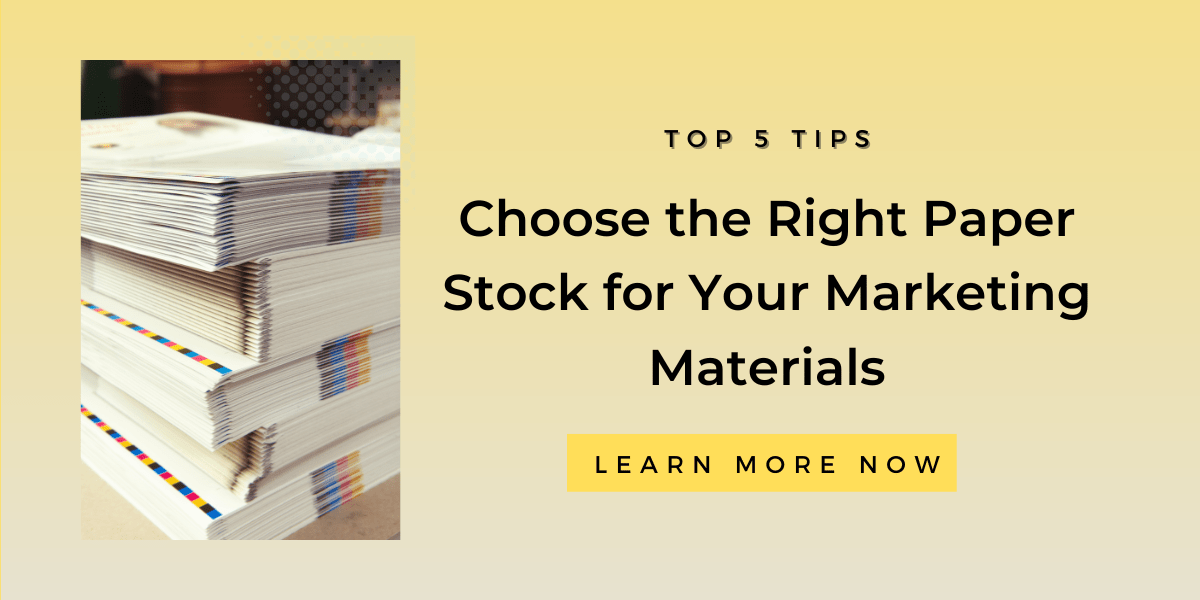
When it comes to printing your marketing materials, choosing the right paper stock is just as important as the design itself. The type of paper you choose can affect the look and feel of your materials, as well as their durability and cost. In this blog post, we’ll explore some key factors to consider when choosing the right paper stock for your print materials.
1. Paper Weight: How to Choose the Right Thickness
When it comes to paper weight, it’s essential to choose the right thickness for your marketing materials. The paper weight is measured in GSM (grams per square meter), and it refers to the thickness and sturdiness of the paper. For business cards, flyers, and brochures, a paper weight of 200-300 GSM is generally recommended. For postcards or invitations, a weight of 300-400 GSM is often used.
2. Paper Finish: Choosing the Right Texture and Appearance
The paper finish refers to the texture and appearance of the paper. There are several types of paper finishes to choose from, including matte, glossy, satin, and uncoated. Matte paper has a smooth, non-glossy finish that can give your materials a classic and sophisticated look. Glossy paper has a shiny, reflective finish that can make colors appear more vibrant and eye-catching. Satin paper has a slight sheen, while uncoated paper has a natural, untreated finish.
3. Paper Color: Adding a Splash of Color
Paper color can also affect the look and feel of your materials. White is the most common paper color, but there are also other options such as off-white, ivory, cream, and colored paper. Colored paper can be used to make your materials stand out and grab attention, but it’s important to choose a color that complements your branding and design.
4. Paper Type: Different Types of Paper for Different Printing Needs
There are several types of paper to choose from, including coated, uncoated, textured, and recycled paper. Coated paper has a smooth, glossy finish and is often used for high-quality prints. Uncoated paper has a natural, untreated finish and is often used for more rustic or natural designs. Textured paper can give your materials a unique and tactile feel, while recycled paper is eco-friendly and can appeal to environmentally conscious customers.
5. Budget: How to Balance Quality and Cost
Finally, it’s essential to consider your budget when choosing the right paper stock for your materials. Heavier paper weights, glossy finishes, and textured paper can all increase the cost of your prints, so it’s important to balance the quality of the paper with your budget constraints.
At Melbourne Print Group, we offer a wide range of paper stocks and finishes to choose from. Our expert team can also help you choose the right paper for your needs. Contact us today to learn more about our printing services and get a free quote.